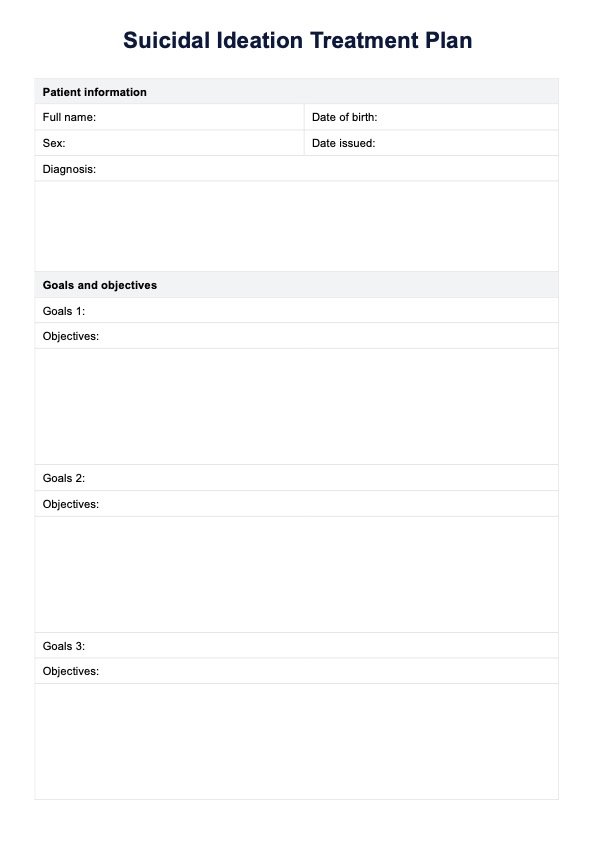A Suicidal Ideation Treatment Plan is used when a patient expresses suicidal thoughts or shows related behaviors. It's essential during crises and for ongoing management to prevent escalation and ensure safety.

Suicidal Ideation Treatment Plan
Download our free Suicidal Ideation Treatment Plan template to structure care for patients with suicidal thoughts effectively!
Suicidal Ideation Treatment Plan Template
Commonly asked questions
These plans provide a structured approach to managing and mitigating risk. They ensure timely interventions, consistent care, and clear communication among healthcare providers, which improves patient safety and treatment outcomes.
Individualizing the plan addresses the unique causes and circumstances of the patient’s suicidal thoughts, increasing the effectiveness of treatment by aligning strategies with the patient's specific needs, cultural background, and personal preferences.
EHR and practice management software
Get started for free
*No credit card required
Free
$0/usd
Unlimited clients
Telehealth
1GB of storage
Client portal text
Automated billing and online payments











